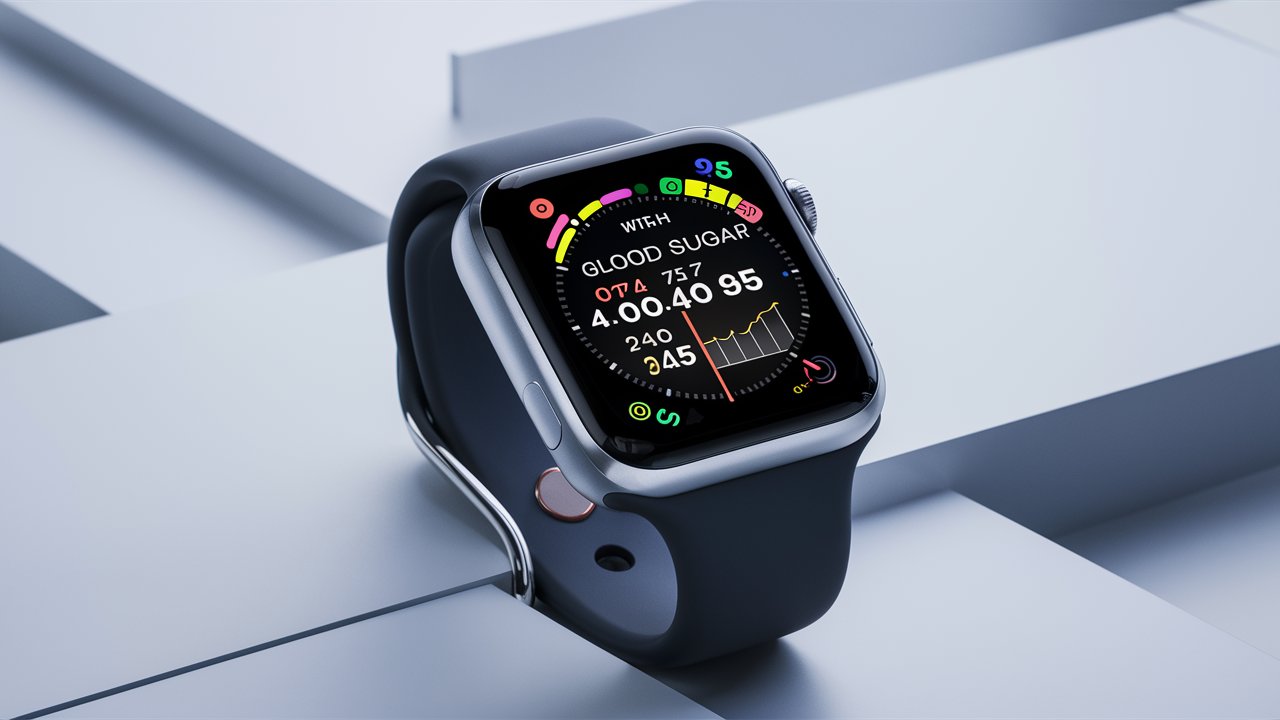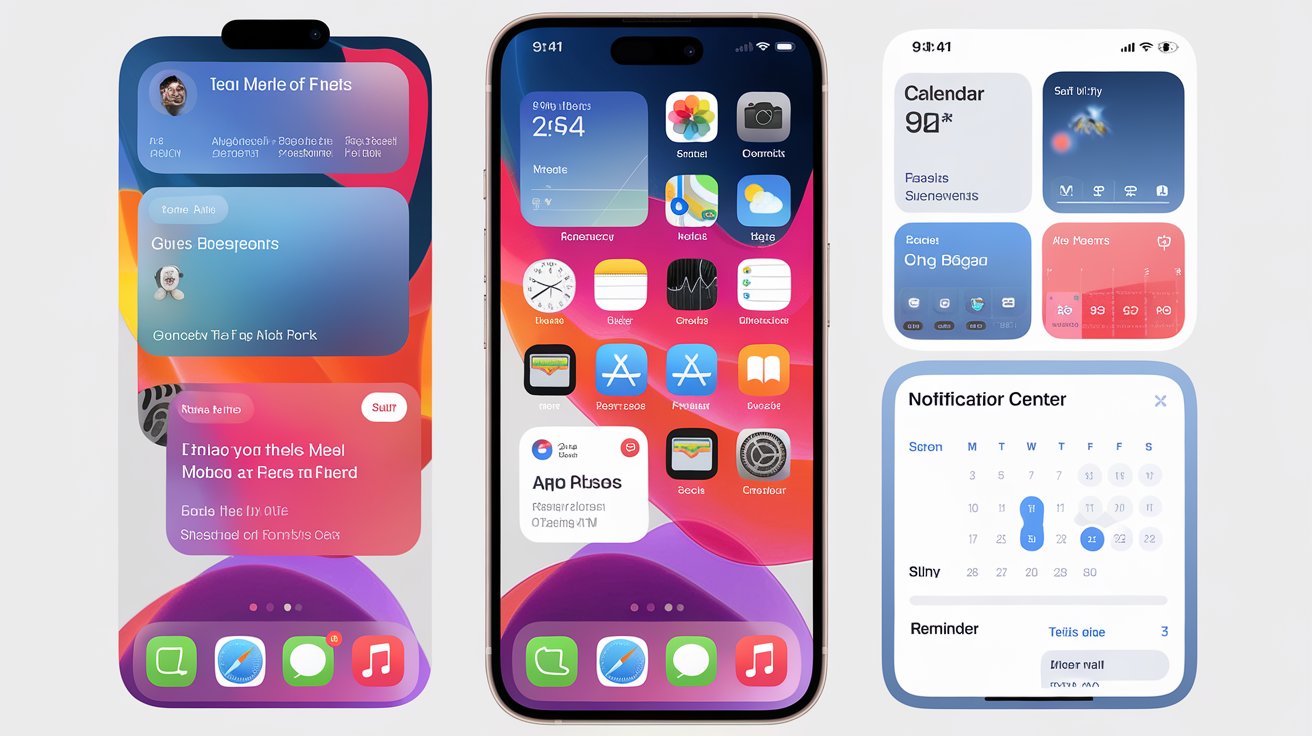The Apple Watch has always been more than just a watch. It’s a tiny marvel strapped to your wrist, combining style with cutting-edge technology. From tracking your steps to alerting you to irregular heartbeats, it has revolutionized how we interact with our health. But Apple is never one to rest on its laurels. Enter the Apple Watch glucose monitor, a potential game-changer for millions around the globe. So, what’s the big deal about this new feature? Let’s dive in and explore.
Historical Context
Glucose monitoring has come a long way from the early days of cumbersome devices and painful finger pricks. Today, we have sleek, non-invasive wearables like the Apple Watch that make monitoring your health as easy as checking the time.
Development of Apple Watch Health Features
The Apple Watch has always been at the forefront of health innovation. From heart rate monitors to ECG capabilities, it’s been a journey of constant improvement. The integration of glucose monitoring is the latest in a series of milestones aimed at making health management more accessible.
Milestones in Apple’s Health Innovations
From the introduction of the Health app to the launch of the ECG feature, Apple has consistently pushed the boundaries of what wearables can do. The glucose monitor is yet another leap forward, solidifying Apple’s commitment to health technology.
Technical Specifications
Detailed Specifications of the Apple Watch Glucose Monitor
The Apple Watch Glucose Monitor is packed with advanced sensors that measure glucose levels in real time. It uses optical sensors that read the interstitial fluid beneath your skin, providing accurate and continuous readings.
Sensor Technology Used
The sensor technology is non-invasive and uses light to measure glucose levels. This eliminates the need for needles, making it a painless and convenient option for users.
Software Integration with Health Apps
The Apple Watch seamlessly integrates with the Health app, allowing users to track their glucose levels alongside other health metrics. This integration provides a comprehensive view of your health at a glance.
Battery Life and Durability
Despite its advanced features, the Apple Watch maintains a robust battery life, ensuring that you can monitor your glucose levels without frequent charging. The device is also designed to withstand everyday wear and tear, making it a reliable companion.
Types and Categories
Different Models of Apple Watch Supporting Glucose Monitoring
Not all Apple Watch models support glucose monitoring. The latest Series models are equipped with the necessary sensors, offering a range of options depending on your needs and budget.
Variations in Sensor Types
Different models might come with slight variations in sensor technology, affecting the precision and accuracy of readings. It’s essential to choose a model that fits your specific health requirements.
Comparison with Other Glucose Monitoring Devices
Compared to traditional glucose monitors, the Apple Watch offers unparalleled convenience and integration with other health metrics. However, it’s crucial to consider factors like accuracy, cost, and personal preference when making a choice.
Applications of Apple Watch Glucose Monitor
Everyday Use for Diabetic Patients
For diabetic patients, regular glucose monitoring is a necessity. The Apple Watch makes this process seamless and less intrusive, helping users manage their condition more effectively.
Use in Fitness and Health Tracking
Even if you’re not diabetic, the glucose monitor can provide valuable insights into how your body responds to different foods and exercises, helping you optimize your health and fitness routine.
Integration with Other Health Devices
The Apple Watch can sync with other health devices like insulin pumps, providing a cohesive and streamlined health management system.
Corporate and Clinical Applications
Beyond personal use, the Apple Watch’s glucose monitoring capabilities have potential applications in corporate wellness programs and clinical settings, offering a scalable solution for broader health management.
Symptoms and Signs of Diabetes
Common Symptoms of Diabetes
Understanding the symptoms of diabetes is crucial for early detection and management. Common symptoms include frequent urination, excessive thirst, extreme fatigue, and unexplained weight loss.
Importance of Regular Glucose Monitoring
Regular glucose monitoring helps in keeping track of blood sugar levels, preventing complications, and managing diabetes more effectively. The Apple Watch makes this task easier and more efficient.
How the Apple Watch Alerts Users
The Apple Watch can alert users when their glucose levels are too high or too low, providing real-time feedback and recommendations to keep them within a healthy range.
Causes and Risk Factors
Biological Factors Leading to Diabetes
Diabetes can be caused by a variety of biological factors, including insulin resistance, autoimmune destruction of insulin-producing cells, and genetic predisposition.
Lifestyle Risk Factors
Poor diet, lack of exercise, obesity, and stress are significant lifestyle factors that can increase the risk of developing diabetes. The Apple Watch helps users monitor and modify these risk factors.
Impact of Genetics and Family History
A family history of diabetes significantly increases your risk. Understanding your genetic predisposition can help in taking preventive measures and monitoring your health more closely.
Diagnosis and Tests
Early diagnosis of diabetes can prevent serious health complications. The Apple Watch aids in this by continuously monitoring glucose levels and alerting users to any irregularities.
Complementary Diagnostic Tools
While the Apple Watch is a powerful tool, it’s essential to use it alongside other diagnostic tools and professional medical advice for a comprehensive health assessment.
Routine Checks and Continuous Monitoring
Routine checks and continuous monitoring are vital for managing diabetes. The Apple Watch provides real-time data, helping users stay on top of their health at all times.
Treatment Options
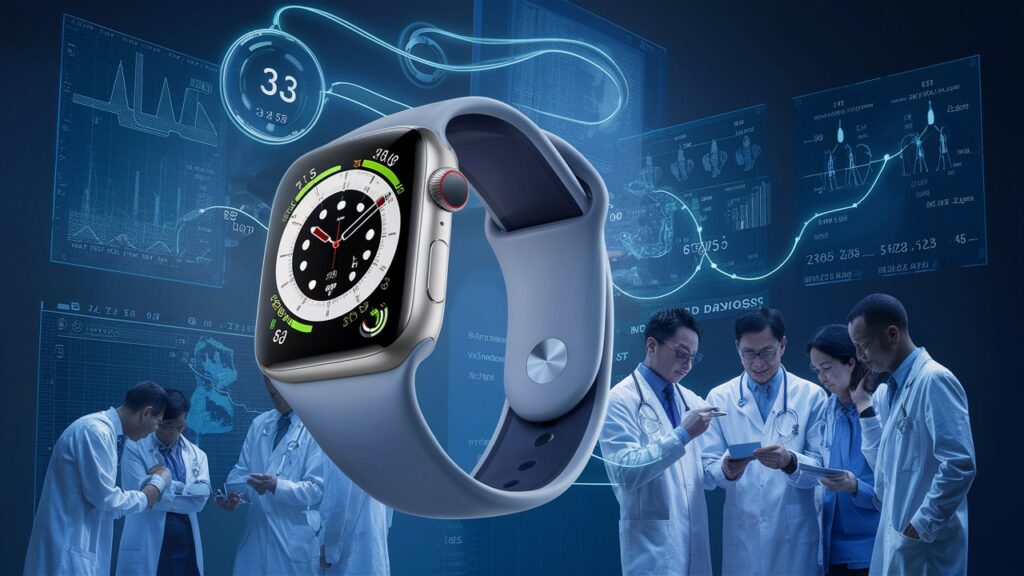
Medical Treatments for Diabetes
There are various medical treatments available for diabetes, including insulin therapy, oral medications, and lifestyle changes. The Apple Watch supports these treatments by providing continuous glucose monitoring.
How the Apple Watch Supports Medication Management
The Apple Watch can remind users to take their medications on time and provide insights into how their body responds to different treatments, aiding in better management of the condition.
Lifestyle Adjustments Recommended by the Apple Watch
The Apple Watch provides personalized recommendations for diet, exercise, and other lifestyle adjustments to help manage diabetes effectively.
Preventive Measures
Tips for Preventing Diabetes
Preventing diabetes involves maintaining a healthy diet, regular exercise, and monitoring your blood sugar levels. The Apple Watch offers tools and insights to help with these preventive measures.
How the Apple Watch Promotes Healthy Habits
The Apple Watch encourages users to adopt healthy habits through reminders, goal-setting features, and real-time feedback on their health metrics.
Role of Regular Monitoring in Prevention
Regular monitoring of glucose levels is crucial in preventing the onset of diabetes. The Apple Watch makes this process easy and convenient, helping users stay proactive about their health.
Benefits of Apple Watch Glucose Monitor
Convenience and Ease of Use
The Apple Watch Glucose Monitor is designed for ease of use, making it accessible for people of all ages. Its non-invasive technology eliminates the need for painful finger pricks.
Accuracy and Reliability
With advanced sensor technology, the Apple Watch provides accurate and reliable glucose readings, ensuring users can trust the data they receive.
Impact on Quality of Life for Users
By making glucose monitoring seamless and less intrusive, the Apple Watch significantly improves the quality of life for users, allowing them to focus on living their lives rather than constantly worrying about their health.
Challenges and Limitations
Potential Drawbacks of the Apple Watch Glucose Monitor
While the Apple Watch offers many benefits, it’s not without its challenges. These can include the initial cost, the need for regular updates, and potential technical issues.
Accuracy Concerns Compared to Traditional Methods
Even though the Apple Watch has very high accuracy, in certain circumstances it might not be as accurate as a standard glucose monitor. Users must be conscious of these restrictions and include the gadget in a more comprehensive approach to managing their health.
Cost and Accessibility Issues
The cost of the Apple Watch may be prohibitive for some users, and accessibility can be an issue in regions with limited availability. These factors need to be considered when evaluating the device’s overall value.
Latest Innovations
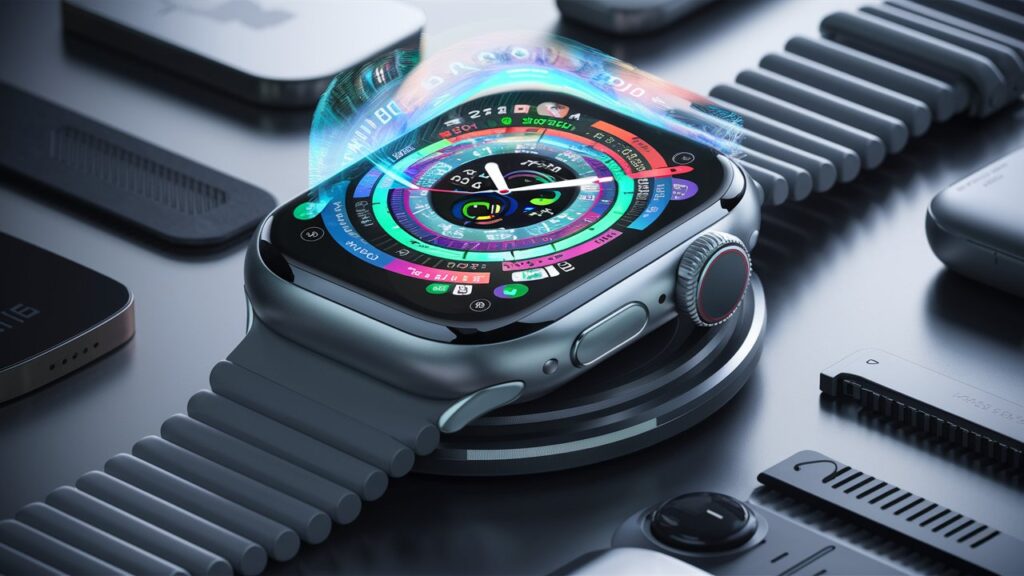
Recent Advancements in Apple Watch Technology
Apple continues to innovate, with recent advancements including improved sensor technology, better battery life, and more seamless integration with other health apps and devices.
Updates in Glucose Monitoring Features
The latest updates to the Apple Watch’s glucose monitoring features include more accurate sensors, real-time alerts, and better integration with the Health app, making it easier for users to manage their health.
Health Monitoring with Apple Watch
The future looks promising for health monitoring with the Apple Watch. Upcoming developments may include even more advanced sensors, AI-driven health insights, and broader health applications.
Future Prospects
Predictions for the Future of Glucose Monitoring
The future of glucose monitoring is likely to see even more non-invasive methods, better integration with other health devices, and more personalized health insights, driven by AI and machine learning.
Potential Developments in Apple Watch Health Features
More sophisticated sensors, wider monitoring of health metrics, and improved interaction with healthcare providers and systems are possible future advances in Apple Watch’s health capabilities.
Long-term Impact on Public Health
The widespread adoption of devices like the Apple Watch could have a significant long-term impact on public health, leading to earlier diagnosis, better management of chronic conditions, and overall improved health outcomes.
You must checkout: Top Reasons to Buy the iPhone 17 Pro and 17 Pro Max
Comparative Analysis
When compared to other wearable health devices, the Apple Watch stands out for its comprehensive health monitoring features, seamless integration with iOS, and user-friendly design.
Pros and Cons of the Apple Watch vs. Traditional Monitors
While the Apple Watch offers convenience and integration, traditional glucose monitors may still be preferred for their precision in critical situations. Users should weigh the pros and cons based on their specific needs.
User Reviews and Expert Opinions
Although some reservations regarding price and accuracy persist, user reviews and professional comments typically emphasize the Apple Watch’s sophisticated features, ease of use, and overall value.
User Guides or Tutorials
Step-by-Step Guide to Using the Apple Watch Glucose Monitor
- Set up your Apple Watch and Health app.
- Navigate to the glucose monitoring feature.
- Calibrate the sensor as instructed.
- Start monitoring your glucose levels.
- Review and analyze your data regularly.
Tips for Maximizing the Use of Health Apps
To get the most out of the Health app, ensure all your health data is synced, set up personalized health goals, and regularly review your health insights to make informed decisions.
Troubleshooting Common Issues
Common issues may include sensor calibration errors, data syncing problems, and battery life concerns. Refer to Apple’s support documentation for detailed troubleshooting steps.
Personal Stories or Case Studies
Real-Life Experiences of Users
Many users have shared positive experiences with the Apple Watch Glucose Monitor, citing improved health management and a better understanding of their condition.
Success Stories and Testimonials
Testimonials highlight how the Apple Watch has helped users detect early signs of diabetes, manage their glucose levels effectively, and improve their overall health.
Challenges Faced by Users and Solutions
Some users have faced challenges, such as initial setup difficulties and sensor calibration issues. Solutions often involve following detailed setup guides and reaching out to Apple support for assistance.
Expert Insights
Quotes and Advice from Medical Professionals
Medical professionals emphasize the importance of regular monitoring and how the Apple Watch can aid in the early detection and management of diabetes.
Insights from Technology Experts
Technology experts praise the Apple Watch for its innovation and seamless integration with other health devices, while also noting areas for potential improvement.
Perspectives on the Future of Health Monitoring
Experts predict a future where wearable technology plays a central role in health monitoring, providing real-time data and personalized health insights that can significantly improve health outcomes.
Safety and Health Precautions
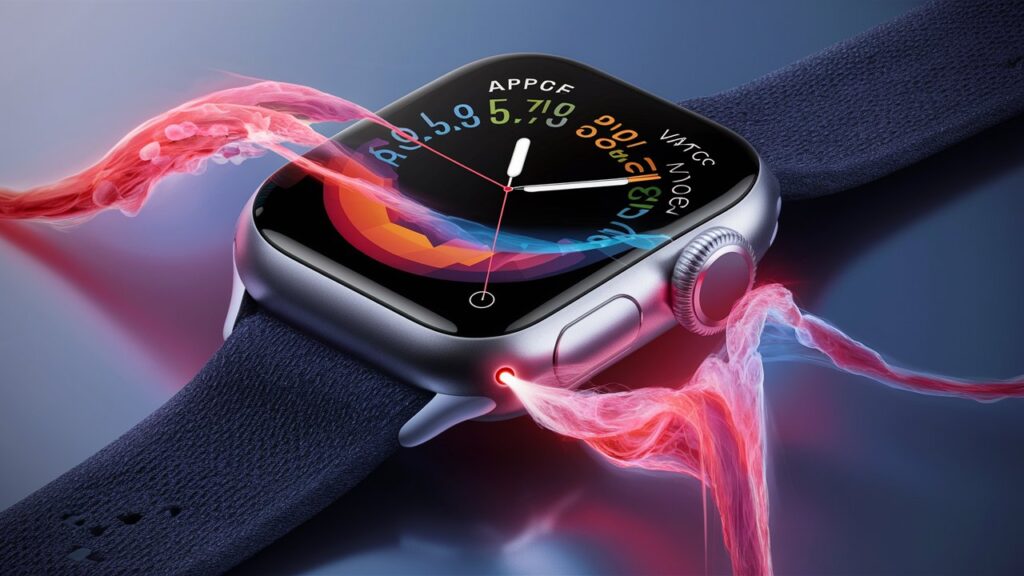
Essential Safety Tips for Users
Ensure your Apple Watch is properly calibrated, regularly update the software, and follow all guidelines for safe usage to avoid any potential health risks.
Health Precautions to Consider
Consult with your healthcare provider before relying solely on the Apple Watch for glucose monitoring, and use it as part of a broader health management strategy.
Apple’s Guidelines for Safe Usage
Apple provides detailed guidelines for safe usage, including proper sensor calibration, regular software updates, and steps to ensure accurate readings.
Also visit: 10 Best Smartwatches Of 2024 |The Future On Your Arm
Conclusion
Summary of Key Points
The Apple Watch Glucose Monitor offers a revolutionary way to manage diabetes and monitor glucose levels, providing convenience, accuracy, and a wealth of health insights.
Final Thoughts on the Apple Watch Glucose Monitor
While it’s not without its challenges, the Apple Watch represents a significant advancement in health monitoring technology, offering a valuable tool for both diabetic and non-diabetic users.
Call to Action for Further Education
Stay informed about the latest advancements in health technology, and consider integrating devices like the Apple Watch into your health management routine for better health outcomes.
Frequently Asked Questions
Is the Apple Watch working on a glucose monitor?
Yes, Apple is reportedly working on integrating a glucose monitor into the Apple Watch. This feature aims to help users track their blood sugar levels non-invasively. However, as of now, it hasn’t been officially released.
Is there a smartwatch that checks blood sugar?
Currently, no smartwatch can directly measure blood sugar levels non-invasively. However, some smartwatches, like the Apple Watch, can connect to continuous glucose monitors (CGMs) from other companies to display blood sugar data.
Can an iPhone check blood sugar?
An iPhone itself cannot check blood sugar levels directly. However, it can connect to various CGMs and health apps that track blood sugar data. These apps can sync with the Apple Health app to provide comprehensive health monitoring.
Can you track glucose in Apple Health?
Yes, you can track glucose levels in the Apple Health app. This requires data input from compatible devices like CGMs, which sync with the app to provide continuous glucose monitoring data.
Does the Apple Watch 8 have a blood sugar sensor?
As of now, the Apple Watch Series 8 does not have a built-in blood sugar sensor. However, it can work with external CGMs to display blood sugar data on the watch.
Can my Apple Watch detect low blood sugar?
The Apple Watch itself cannot detect low blood sugar levels. However, when paired with a CGM, it can receive alerts about low blood sugar levels, helping users manage their condition more effectively.

